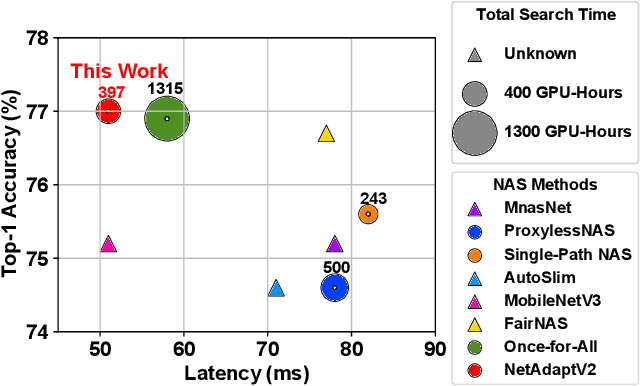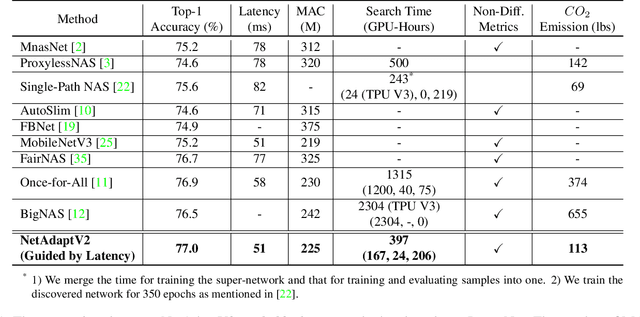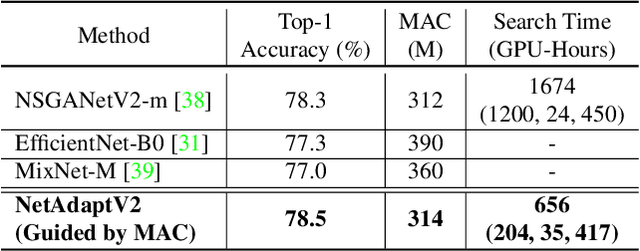NetAdaptV2: Efficient Neural Architecture Search with Fast Super-Network Training and Architecture Optimization
Paper and Code
Mar 31, 2021



Neural architecture search (NAS) typically consists of three main steps: training a super-network, training and evaluating sampled deep neural networks (DNNs), and training the discovered DNN. Most of the existing efforts speed up some steps at the cost of a significant slowdown of other steps or sacrificing the support of non-differentiable search metrics. The unbalanced reduction in the time spent per step limits the total search time reduction, and the inability to support non-differentiable search metrics limits the performance of discovered DNNs. In this paper, we present NetAdaptV2 with three innovations to better balance the time spent for each step while supporting non-differentiable search metrics. First, we propose channel-level bypass connections that merge network depth and layer width into a single search dimension to reduce the time for training and evaluating sampled DNNs. Second, ordered dropout is proposed to train multiple DNNs in a single forward-backward pass to decrease the time for training a super-network. Third, we propose the multi-layer coordinate descent optimizer that considers the interplay of multiple layers in each iteration of optimization to improve the performance of discovered DNNs while supporting non-differentiable search metrics. With these innovations, NetAdaptV2 reduces the total search time by up to $5.8\times$ on ImageNet and $2.4\times$ on NYU Depth V2, respectively, and discovers DNNs with better accuracy-latency/accuracy-MAC trade-offs than state-of-the-art NAS works. Moreover, the discovered DNN outperforms NAS-discovered MobileNetV3 by 1.8% higher top-1 accuracy with the same latency. The project website is http://netadapt.mit.edu.
 Add to Chrome
Add to Chrome Add to Firefox
Add to Firefox Add to Edge
Add to Edge